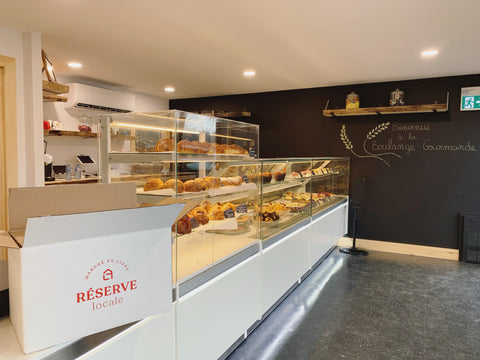Author: Stéphanie Turgeon - Bachelor in Food Science
Defrosting 101
On the counter, in warm/hot water, in cold water, in the oven, in the microwave, in the refrigerator, etc. Everyone seems to have different ways of defrosting food. However, among the ways of doing things mentioned above, know that there are good ones and bad ones. So here is a quick guide to freezing 101 that will help you defrost your products properly.
Why is defrosting properly so important?
Because this reduces and even avoids the risks of bacterial propagation which can lead to food poisoning. First, it is important to understand that freezing does not kill the bacteria present in a food in question, rather it inhibits their growth. Therefore, when we defrost our food improperly, this can encourage the growth of bacteria that have been “put to sleep” during freezing.
The three best methods of defrosting
- In the refrigerator (ideal method!)
Rule #1: Place the food, ideally still wrapped, on a clean plate or on a paper towel to retain the liquid that escapes in the refrigerator during defrosting.
Rule #2: Always defrost in the lowest section of your refrigerator to prevent escaping liquids from contaminating other foods.
Important : You can allow approximately 10 hours of freezing per kg of poultry. For other types of meat, 24 hours should be enough, regardless of the quantity.
- Submerged underwater
Rule #1 : The food must be packaged and the packaging must be airtight/airtight.
Rule #2 : The container used must be clean and large enough so that the food in question can be completely submerged under water.
Rule #3 : Place the food in a container filled with cold water and change the water every 30 minutes until completely defrosted.
Important : The water must cover the entire food. A weight can be placed on the food to ensure that it is completely submerged.
- In the microwave
Rule #1: Place the food in a container or plate that can collect the defrosting liquids in order to avoid contamination of your microwave.
Rule #2: Place a half-open lid on your container or plastic wrap with holes to let steam escape.
Rule #3: Use the “Defrost” function on your microwave. If you do not have this function, allow approximately 7 minutes for each pound of meat to defrost.
Important : Once defrosted in the microwave, the meat must be cooked quickly .
Methods to avoid
- At room temperature
For what? This way, the food does not defrost evenly. The bacteria on the surface, having been “put to sleep” during freezing, reach temperatures favorable to their multiplication. In addition, there may be the formation of an exudate (liquid on the surface) which is conducive to this same growth.
- Under hot water
For what? Like the previous method, the defrosting temperature is too high in this case and encourages the growth of bacteria.
Thawing time in the refrigerator per product
Meat: One day for 2.3 kg (5 lb) in the refrigerator
Poultry: 16 hours in the refrigerator for poultry weighing up to 2 kg (4.5 lbs)
*Note: take care to thaw the poultry well before sending it to the oven, it could overcook on the outside before reaching the right temperature inside.
Fish: 3 hours in the refrigerator per 450 g (1 lb); but up to 6 hours per 450 g (1 lb) for a block frozen packet.
Thawing time in a cold water bath depends on the temperature of the water you pour in and how often you change it. Defrosting can sometimes be a task that you want to do as quickly as possible. However, keep in mind that the faster the defrosting, the more dangers there may be associated with consuming the food in question. So take the time to do it well to enjoy your food with pleasure and without hassle! As a general rule, thawing in the refrigerator maintains a better texture quality in foods, but it really depends on the recipe you want to cook. For example, meat that will be served in a stew can very well be thawed in water, while the same meat enjoyed on the BBQ benefits from being thawed more slowly in the refrigerator.
To view our products, click here .
Sources used for writing this article :
Corneau, L. et al. (2017). The Visual Encyclopedia of Foods . Quebec America.
Health Canada. (2017). Defrost food safely . Retrieved from https://www.canada.ca/fr/sante-canada/services/conseils-generaux-salubrite/decongelation-salubre.html .
MAPAQ. (2017). Defrosting . Retrieved from https://www.mapaq.gouv.qc.ca/fr/Restauration/Qualitedesaliments/securitealiment/inspection/methodeinspection/Pages/Decongelation.aspx .






Comments (0)
There are no comments for this article. Be the first to leave a message !